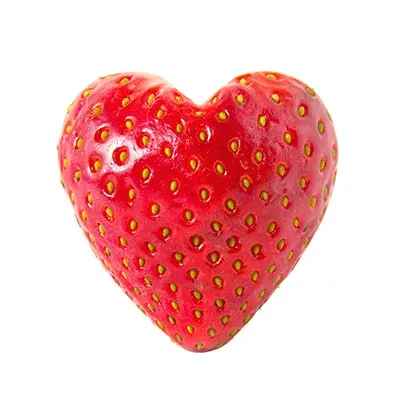We eagerly await their arrival. The real strawberries from our region, those grown in local soil and so full of flavour, finally marking the beginning of the long-anticipated summer season. Every year, their arrival brings joy and pleasure to both lovers of the little red fruit as well as pastry chefs. Their vibrant colours and intoxicating scent awaken the taste buds and announce the beginning of a delightful time of the year. But did you know that, as well as being delicious, they actually hide some surprises? In this article, we explore nine fascinating facts about strawberries, these summer gems which are so much more than just a simple fruit. Dive into this wonderful world: The embodiment of the summer season.
1. Is strawberry a fruit?
Not exactly. From a botanical point of view, strawberries are part of the rosacea family and are classified as 'false fruits' or 'accessory fruits'.
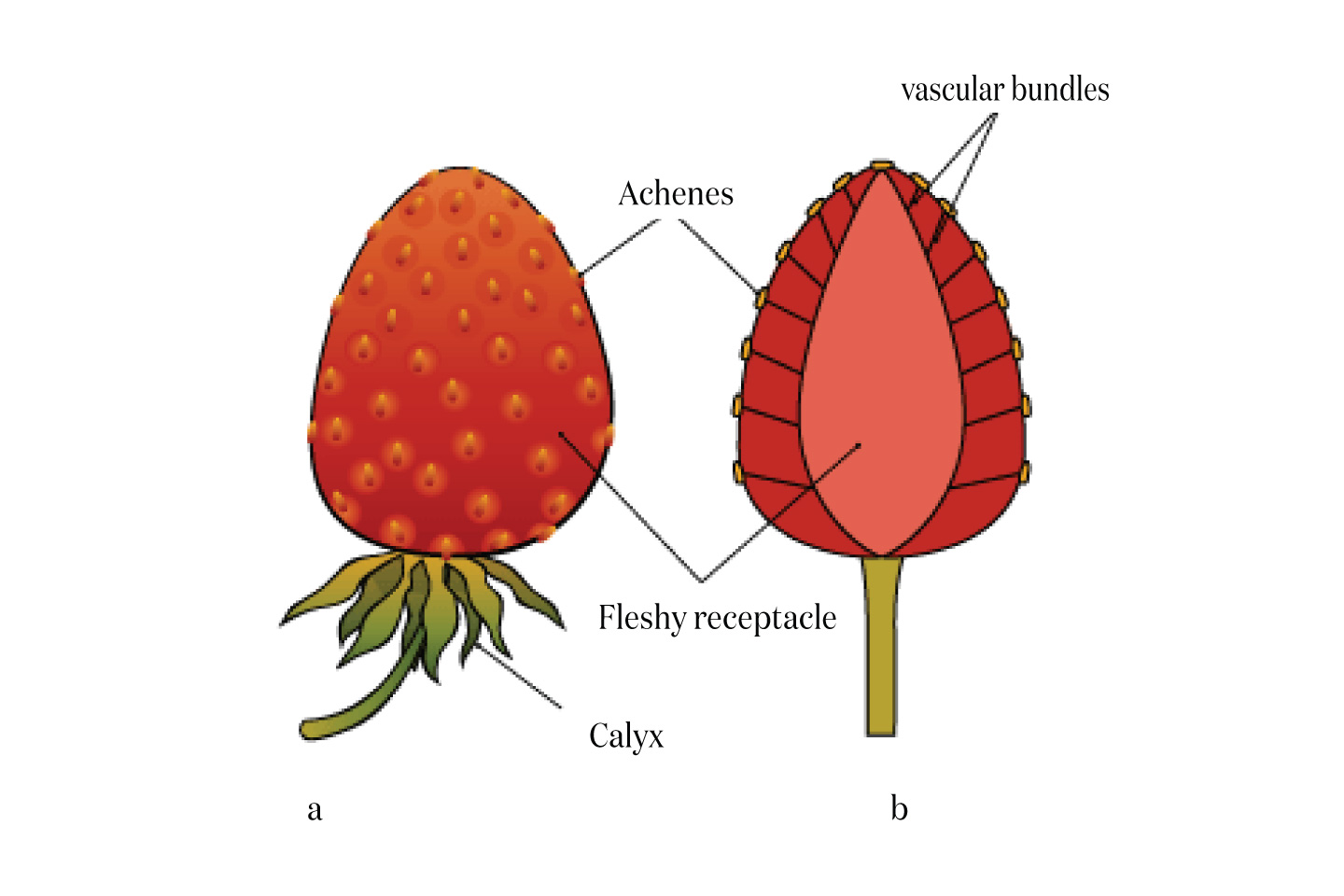
The plant is an herbaceous plant which usually grows at a low height. It produces white, delicate and fragrant flowers, which turn into small, fleshy fruits. These small fruits are what we commonly call 'strawberries'. They develop from the floral receptacle, while the true strawberry fruits are actually the small seeds or achenes that can be seen on the surface of the fruit.
2. History of the strawberry
Those colourful and fragrant jewels with the ability to gently awaken your taste buds, have charmed cultures around the entire world. Their story is part of a chronicle that extends over centuries. Originally from the forests of Europe and North America, where they used to grow in the wild, they found their way to the tables of the Romans, who, from the very beginning, considered them a true culinary treat.
Over the centuries, they have grown in popularity thanks to their sweet taste and vibrant colour. Their sweetness and fragrance have captivated the taste buds of people all around the globe. Today, they are widely grown in many countries and are among the most appreciated of all fruits.

3. More than six hundred types of strawberries
We are spoilt for choice! To find our way around, they are classified according to shape (round, triangular, conical), origin and time period. Then, depending on their type, whether they are remontant or not, they can also feature a distinct flavour, size and growing season.
Remontant strawberry
Remontant varieties produce fruit throughout the growing season, usually from June until the first frosts.
- Mara des bois
This French variety is a favourite amongst many food connoisseurs. Producing small fruit with an intensely sweet and fragrant taste, reminiscent of wild strawberries, the Mara des Bois offers several harvests from June to October.
- Charlotte
A juicy and highly fragrant one reminiscent of the taste of wild strawberries. Charlotte plants generously produce from late spring to autumn.
- Cirafine
The small strawberries of this variety are renowned for their sweet and slightly sour flavour. Their growing season extends from the beginning of summer to the beginning of autumn.
- Maestro
This variety provides very large, shiny and juicy red fruit, with a rich and sweet taste. They are perfect for a summer fruit salad or to garnish a tart. The harvest begins in June and continues until the first frosts.
- Capron Royal
An ancient variety that produces strawberries of a small size, with a delicious and fragrant flavour. The Capron Royal fruit is usually harvested from June to October.
- Albion
This variety from the US is appreciated for its beautiful, firm strawberries, their deep red colour and very sweet taste. It produces strawberries from June until the first frosts.
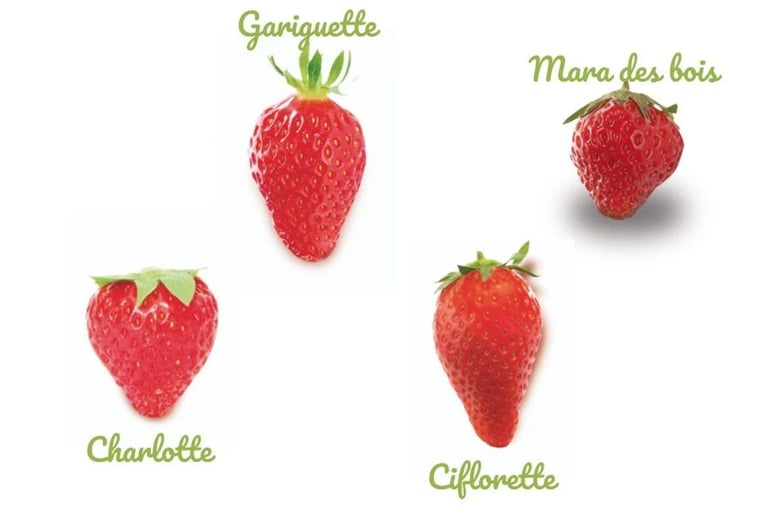
Perpetual strawberries
Non-remontant varieties produce a single, large harvest, typically in the early summer.
- Gariguette
This early variety is the star of spring markets. Appreciated for its juicy flesh, its taste is very sweet and its fragrance evokes strawberry sweets. Its harvest season usually extends from May to June.
- Ciflorette
Renowned for its long harvest season, the Ciflorette variety produces strawberries featuring an elongated shape and a finely acidic taste. It is usually harvested from mid-April to mid-June.
- Darselect
This late variety produces large strawberries with a very sweet taste and firm texture. The Darselect harvest season typically extends from late June to mid-July.
- >Fragaria vesca, or wild strawberry
This rustic variety produces small fruits with a highly fragrant and slightly sour taste. Their harvest season typically extends from May to June.
- Clery
An early variety, it produces large and beautiful fruits with a conical shape, firm and juicy flesh, and a sweet and slightly sour taste. It is usually harvested from late April to June.
- Elsanta
This variety produces medium-sized fruit, and is firm and juicy, featuring a balanced taste. It is usually harvested from May to June.
Thanks to the diversity of all these varieties, gardeners and strawberry lovers are spoilt for choice. Whether you're a fan of remontant varieties producing fruit throughout the summer, or you prefer the seasonal abundance of non-remontant varieties, there's a strawberry for every taste and season.
4. A Strawberry variety for every purpose
When it comes to choosing a variety, it is essential to consider its intended use. In fact, each variety has its own characteristics that will impact the taste, texture and even the colour of your preparations. Below are some tips to help you select the perfect variety based on what you want use it for.
Strawberry jam
To make jam, you want fruits that hold up well during cooking and have a good balance between sweetness and acidity. The Gariguette is often favoured for its sour notes that perfectly balance the sugar added while preparing the jam. The Darselect, due to its very sweet flavour and firm texture, is also an excellent option for making a full-flavoured jam. It is important to note that sugar levels may vary based on personal preference and recipe requirements.
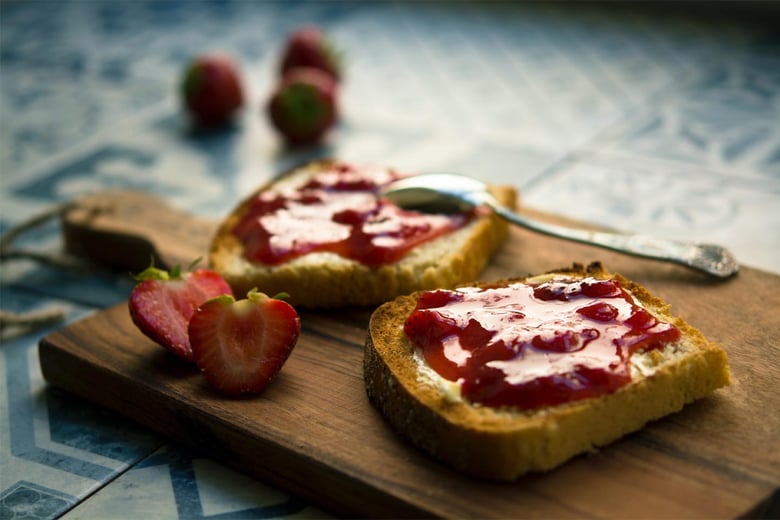
Plain strawberry
If you want to enjoy your strawberries plain, choose a variety with a sweet and intense taste. La Mara des Bois, with its sweet flavour and wood strawberry fragrance, is a delight to taste as it is. The Charlotte is also much appreciated thanks to its flavour reminiscent of wild strawberries.
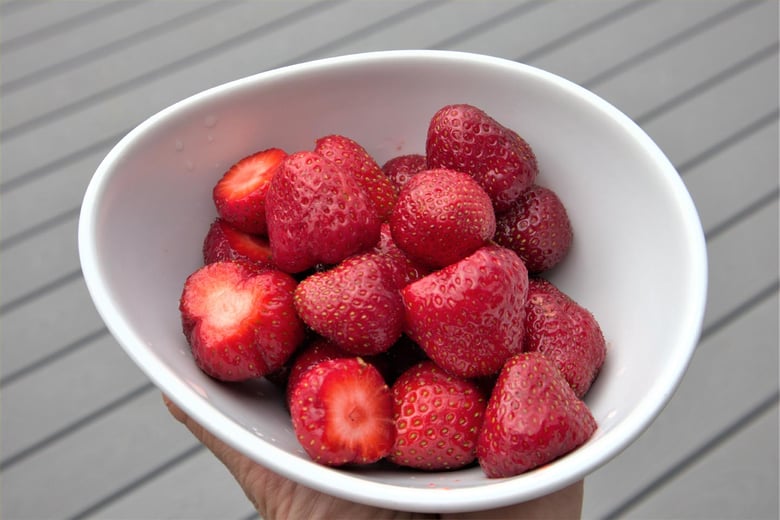
Pastry
For pastry, you should choose fruits that hold up well during cooking and have a pronounced flavour. The Elsanta is a popular choice, for its firmness and balance of flavour, while the Ciflorette, with its finely sour taste, brings a refreshing note to your pastries.

Surprise with strawberries
If you want to surprise your guests, opt for some unusual or rare varieties. The Pineberry is a white variety with a vaguely pineapple-like taste, while the Fragaria moschata provides a unique fragrance reminiscent of rose. Black fruit varieties, such as the Purple Wonder, can also make an impression.
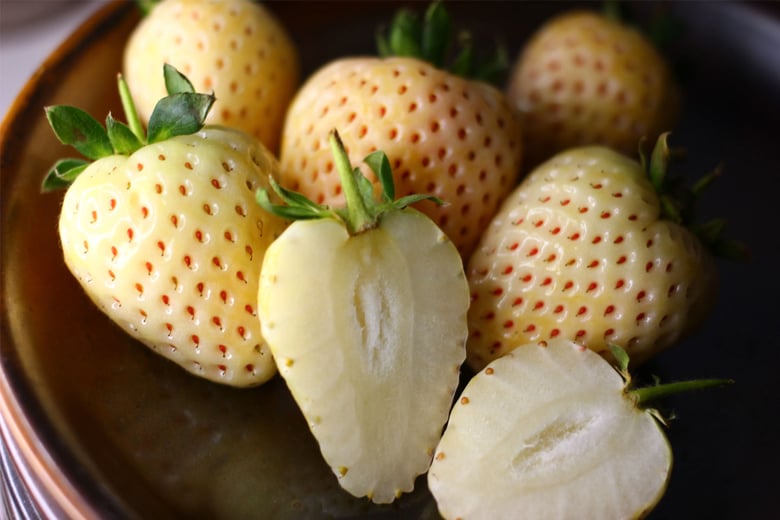
Each variety opens up a world of culinary possibilities, allowing you to fully enjoy the season while creating delicious and refined dishes.
5. The high nutritional value of the strawberry
As well as being delicious, they are packed with essential nutrients. Their sweet and sour taste comes with a multitude of health benefits.
- First of all, they are a source of vitamin C. A serving of strawberries can supply part of your daily requirement for vitamin C, which is essential for the proper functioning of the immune system and maintaining healthy skin.
- they are rich in antioxidants. These substances play a role in protecting our body from damage caused by free radicals, i.e., unstable molecules that can damage cells and contribute to the development of certain diseases. Antioxidants found in strawberries, such as flavonoids and anthocyanins, help to neutralise these free radicals and reduce oxidative stress.
- they are also a source of dietary fibre. Fibre is crucial for digestive health, as it aids in the proper functioning of the intestinal tract and helps prevent constipation. Moreover, fibre contributes to the feeling of fullness, which can be beneficial for weight management.
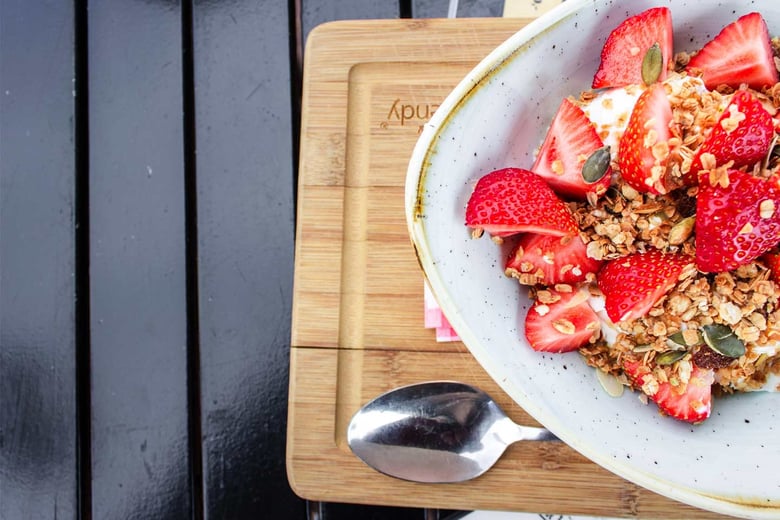
- they contain essential minerals such as potassium and manganese. Potassium is important for maintaining fluid balance in the body, for the proper functioning of the heart and for regulating blood pressure. Manganese, on the other hand, participates in the process of bone formation and brain function.
- they are light. Thanks to their low calorie content, they can be included in a balanced diet. They are also naturally low in fat and sodium. However, it is important to note that strawberries can have allergenic effects, so it is advisable to be vigilant, particularly when it comes to people with known allergies.
In brief, they are much more than just a pleasant taste. They are a true asset for health, thanks to their high content of vitamin C, antioxidants, fibre and beneficial minerals. So, why not let strawberries entice you with their delicious taste and enjoy all the benefits they offer your body?
6. How to cook strawberries: Endless possibilities
Strawberries offer endless possibilities for cooking, making them a versatile ingredient for a variety of dishes and desserts. Whether you enjoy them fresh, cook them or turn them into a variety of preparations, they always bring a touch of freshness and fruity sweetness to your culinary creations. A non-exhaustive list of recipes follows, to cook and enhance the taste of your strawberries in different ways
How to prepare strawberries while preserving their delicious aroma
- Jam
Delicious spread on toast or used as a filling for your pastries.
- Coulis
Perfect for coating desserts such as ice creams, pancakes and cakes.
- Sirup
Ideal for flavouring drinks, cocktails, as well as creating refreshing desserts.
- Juice
A thirst-quenching drink, full of flavour and perfect for accompanying your meals or simply for cooling down.
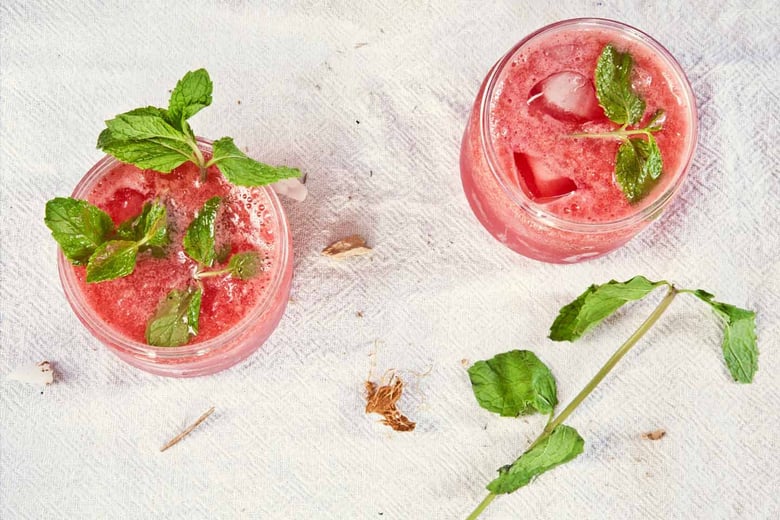
Strawberry desserts: a star on the plate
- Charlotte
A classic dessert made with finger biscuits and strawberries, perfect for special occasions.
- Pie
With or without custard cream, a delicious shortbread dough topped with fresh strawberries and covered with a thin layer of topping.
- Tiramisu
A fruity twist on the famous Italian dessert, consisting of coffee-soaked biscuits, mascarpone cream and strawberries.
- Eton mess
A traditional English dessert made with meringue, strawberries and whipped cream.
- Bavarian
A light and creamy dessert based on a strawberry mousse and a biscuit base.
- Crumble
A comfort dessert, made of strawberries topped with a layer of crispy dough.
- Pavlova
A crunchy meringue topped with whipped cream and fresh strawberries.
- Mousse
With its light and airy texture, it's perfect to top off a meal.

Strawberry drinks
- Smoothie
Healthy and refreshing, a drink that allows you to enjoy all the benefits of strawberries.
- Milkshake
A gourmet drink based on vanilla ice cream, strawberries and milk, ideal for a little indulgence.
- Diabolo
A thirst-quenching drink, made with strawberry syrup and lemonade, perfect for hot summer days.
- Daiquiri
A classic cocktail made with fresh strawberries, rum, lemon juice and sugar, perfect for some refreshment in a summery setting.
- Mojito
A fruity twist on the famous Cuban cocktail, based on fresh strawberries, mint, rum, lime and sparkling water.
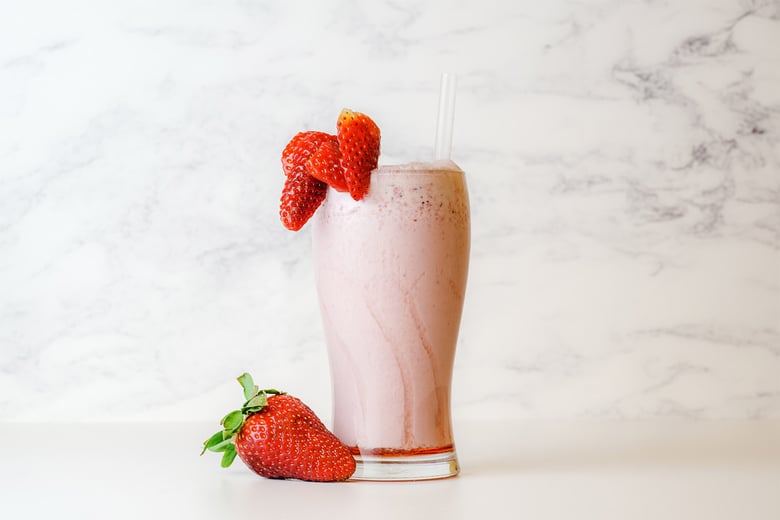
Frozen strawberry
- Ice cream
A must-have ice cream delight, made with pureed strawberries and cream.
- Sorbet
A refreshing and light ice cream version, without the addition of dairy.
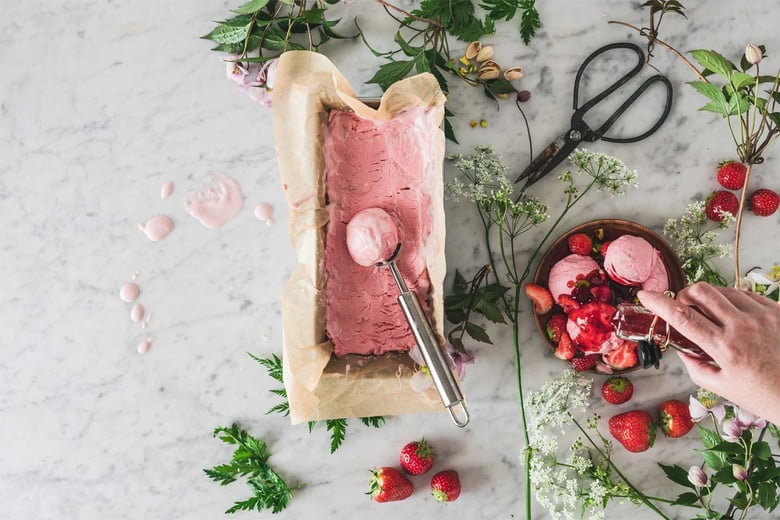
Sweet and savoury strawberry variations
- fruit salad
A fresh and sweet fruit salad, mixing strawberries cut into pieces with other fruit and vegetables, as desired.
- Strawberry and chicken skewers
Tasty skewers combining pieces of marinated chicken with juicy strawberries. Grill them for a delicious sweet and savoury combination.
- Strawberry and goat cheese pizza
Pizza base topped with slices of fresh strawberries and creamy goat’s cheese. Add a touch of honey and basil to achieve an amazing blend of flavours.
- Chicken and strawberry wrap
An unconventional yet delicious combination of grilled chicken, sweet strawberry slices, crunchy lettuce and a light sauce. Wrap everything in a tortilla for a balanced, fresh meal.
- Rocket, strawberry and feta salad
Mix some fresh rocket salad, some sliced strawberries and some pieces of feta in a bowl. Sprinkle with balsamic vinegar for a refreshing, sweet and savoury salad.
- Strawberry and goat cheese croustade
Prepare a crispy croustade and top it with a mixture of sliced strawberries and crumbled goat cheese. Sprinkle with a little sugar and cook until the top is golden and the strawberries are slightly caramelised.

As much as these recipes are mouth-watering, it is worth remembering that one of the easiest ways to enjoy strawberries is to eat them fresh. There is nothing more indulgent than snacking on a juicy, sweet strawberry.
7. Strawberry season: the star of sunny days
they are associated with spring and summer, when they are at their peak in terms of flavour, texture and availability. During these months, they ripen under the warm sun and develop their intense red colour, their fragrance and sweetness.
The season is subject to variations depending on the region and climate, but usually starts from April until July. During this period, you can find the freshest and tastiest strawberries on the stalls of markets or directly from the farm.
they are best eaten when fully ripe, because it is when they are the most delicious. When ripe, they have a balanced sweet and sour flavour, they are juicy and tender. Their flesh is full of flavour and melts in the mouth, providing a pleasant and satisfying sensation.
It is important to note that, in order to enjoy their flavour at its best, they must be fresh. When buying strawberries, make sure that you choose ones that are firm, with no stains or mould. Their colour should be uniform and vibrant. Fresh strawberries should have a pleasant fruity smell, too.
The seasonality of strawberries adds to their appeal. If you savour these delicious fruits when ripe, you can fully appreciate their succulent and refreshing taste. So, take advantage of the season and indulge in this marvellous fruit, while taking advantage of its nutritional benefits and unmatched flavour.
8. Strawberries are easy to grow
Whether you have a garden or not, it's easy to grow strawberries. they are a fruit you can grow at home, whether you have a large garden or just a small space on your balcony. Growing them is relatively easy and rewarding, as you can enjoy fresh and delicious strawberries directly from your own harvest. Below are some cultivation methods you can try:
- Growing in open ground: to cultivate strawberries in the open ground, choose a sunny place with well-drained soil. Prepare the soil by weeding it and enriching it with compost. Plant strawberry plants in rows about 30 to 45 cm apart. Keep the soil moist and weed regularly to promote the healthy growth of the plants.
- Growing in pots or planters: If you have limited space, you can grow them in pots or planters. Choose containers large enough to accommodate the strawberry plants and make sure they have drainage holes to prevent water from building up. Fill the pots with a mixture of good quality potting soil and compost. Place the strawberry plants leaving enough space between them to allow them to grow.
- Raised bed cultivation: raised beds are another option for growing. They offer better humidity control and maintenance is easier. Build a raised bed to the desired height, fill it with a mixture of potting soil and compost, then plant the strawberries. Make sure you water regularly and keep the soil moist.

Regardless of the growing method you choose, it is important to meet the specific needs of strawberry plants. They need at least six hours of sunlight per day and regular watering. They enjoy light fertilisation to encourage their healthy growth.
There are many varieties to choose from, from traditional ones to remontant varieties that produce fruit throughout the season. Find out which varieties are suitable for your climate and what you prefer in terms of flavour.
By growing your own strawberries, you can enjoy the incomparable freshness and taste of freshly picked fruits. What’s more, you'll be proud of your gardening and you'll be able to share your harvest with your loved ones.
9. How to store strawberries
To fully enjoy your strawberries, it is crucial to preserve them correctly. they are delicate and perishable fruit that need special care when it comes to preserving them. Below you can find some tips that will allow you to extend the freshness of your strawberries:
- Select fresh strawberries: when you buy them, choose those that are firm, fleshy and bright in colour. Avoid soft, wilted or stained strawberries.
- Handle them carefully: they are fragile and can easily be damaged. Handle them gently, to avoid crushing or damaging them.
- Do not wash them in advance: it is best not to wash the strawberries before you store them. Excessive humidity may accelerate their deterioration. Wash them just before eating them.
- Use a suitable container: place them in a shallow, non-airtight container to allow good air circulation. If sufficiently ventilated, you can also keep them in their original packaging.
- Store them in the fridge: they should be kept in the refrigerator to extend their freshness. Place them in the least cold part of the fridge, which is usually the vegetable drawer.

- Avoid stacking: Avoid stacking them on top of each other, as they can get crushed and damaged. Arrange them in a single layer for better preservation.
- Do not leave them too long: they are fresh fruit and their shelf life is short. Try to use them within two to three days of their purchase to enjoy their taste at its best.
Any extra strawberries can be frozen to preserve them for a longer period of time. Wash them, trim them and arrange them in a single layer on a baking tray. Once frozen, transfer them to a freezer bag or airtight container and keep them in the freezer. You can use them later to make smoothies, sauces or desserts.
By following these simple tips, you will be able to enjoy your fresh strawberries longer, while preserving their flavour and texture. Take care of your strawberries and enjoy them at their best!


